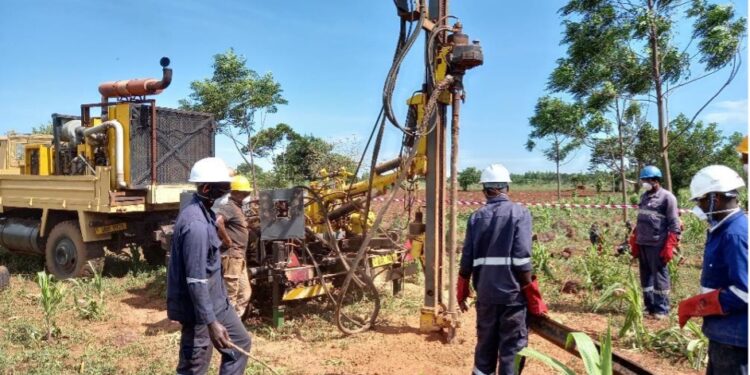Ionic Rare Earths Limited (ASX: IXR) has unveiled an updated Exploration Target and the associated planning of the Phase 5 exploration programme at its 51% owned Makuutu Rare Earths Project in Uganda.
Following the recent update to the Makuutu Mineral Resource Estimate (MRE) to 532 million tonnes at 640ppm Total Rare Earth Oxide (TREO), above a cut-off grade of 200 parts per million (ppm) TREO minus CeO2 (TREO-CeO2), a review has been conducted to establish further exploration potential at Makuutu and plan the work programmes to be conducted over the next 12 months.
The revised Exploration Target, which is additional to the 3 May 2022 MRE, range for additional potential mineralisation at Makuutu has been estimated at; 216 – 535 million tonnes grading 400 – 600 ppm TREO.
“The long-term exploration potential is immense. This updated exploration target, which factors in the successful Phase 3 RAB drilling assay results from July 2021, confirms the massive potential of EL00147, having identified immediate extensions to the resource estimate beyond previous radiometric targeting. Additionally, the new tenement at EL00257 would provide additional upside beyond this target,” Managing Director, Tim Harrison, said.
Exploration Programme – Phase 5
The exploration programme comprises several stages summarised as follows.
- Previous RAB drilling tested areas – Exploration Target The 2021 Phase 3 Rotary Air Blast (RAB) reconnaissance drilling campaign over multiple targets in the Makuutu area identified clay hosted REE mineralisation within, and outside, the sedimentary basin that contains the Makuutu resource. The success of that program has allowed a revision of the Exploration Target. The revised Exploration Target is separated into target areas within the sedimentary basin, and those outside the basin with clay hosted REE mineralisation derived from a mixture of rock types including granite, granodiorite and some mafic rocks.
The aim of the exploration programme in the target areas is to establish a minimum of Inferred level resources in accordance with the guidelines of the JORC code.
The summary steps of the programme are:
- Compilation, lodgement and approval of the exploration programme by the National Environment Management Authority (NEMA) following the Environmental Impact Assessment (EIA) for the licence EL00147.
- Field mapping and sampling of outcropping rocks to assist in identifying potential REE source rocks.
- RAB drilling in target areas A5 and A6 reducing the drill hole spacing, currently over 1km, to a maximum of 500m. This aims to provide greater confidence in the mineralisation and provides samples for geochemical analysis and indicative metallurgy test work.
- Core drilling targeting areas based on the outcomes of the RAB drilling. Detail sampling to determine REE distributions and further metallurgical test work.
- v. Targets A1 – A4 located within the Project Retention Licences RL00007, RL1693 and RL00234 will be core drilled for resource addition.
- Resource modelling
- Untested areas outside the main project trend EL00257 Exploration Licence EL00257 has areas of eU/eTh radiometric anomalism related to lateritic hardcap as seen at Makuutu. To date only reconnaissance field inspection has been conducted on this licence to confirm the radiometric response is related to hardcap.
For further information please visit: https://ionicre.com.au/












